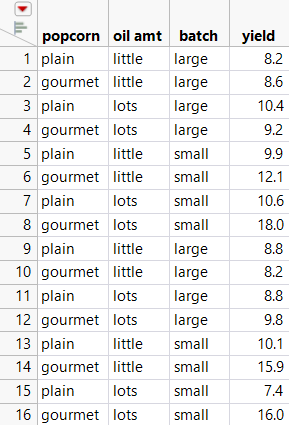Example of Concatenating Data Tables
Suppose that you want to concatenate two data tables (Trial1 and Trial2) into a new data table.
1. Select Help > Sample Data Library and open Trial1.jmp and Trial2.jmp.
2. From the Trial1.jmp table, select Tables > Concatenate.
3. In the Opened Data Table list, select Trial2 and click Add.
4. Click OK.
The data tables combine into a new concatenated table with all of the rows from the first data table followed by all of the rows from the second data table.
Figure 6.20 Result of Concatenating Two Data Tables
Concatenated data tables always contain a column for every column name found in the original data tables. However, if the column names do not match exactly, they are not merged. For example, if the yield column was instead named yield1 and yield2, a separate column would be created for each in the concatenated data table.
When you concatenate two or more data tables containing table variables, separate columns are created for each table variable. This ensures that important distinctions are not lost when concatenating data tables.
Note: Columns are not created for table variables that begin with the name Notes.
